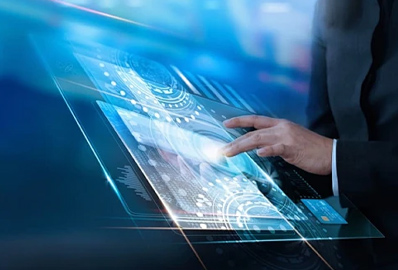Multimedia is the synthesis of various media, generally including text, sound and images.

In a computer system, multimedia refers to a man-machine interactive information exchange and communication medium that combines two or more media. The media used include words, pictures, photos, sounds, animations and movies, as well as interactive functions provided by programs.
summary
Multimedia technology is a technology that stores and manages all kinds of information, such as language, text, data, audio and video, through computers, so that users can communicate with computers in real time through various senses. The contents displayed and carried by multimedia technology are actually the products of computer technology.
What we call media refers to the carrier that carries and transmits certain information or substances. It can be divided into five categories: sensory media \ presentation media \ performance media \ storage media and transmission media. In the computer field, media is mainly the carrier that transmits and stores information, and the transmitted information includes language \ data \ video \ audio and so on. Storage carriers include hard disk, floppy disk, magnetic tape, magnetic disk, optical disk, etc. Multimedia integrates the functions of various media scientifically and provides users with various forms of information jointly, and the information obtained is more intuitive and vivid.
Multimedia technology uses computers to digitize media information such as written materials, video materials, audio and video, and integrate them into interactive interfaces, so that computers have the ability to display different media forms interactively.
develop
Multimedia technology can be said to be a typical product in the information age. At first, multimedia technology was developed in the military field, and military purposes were achieved through multimedia joint display. Later, this technology developed rapidly with its excellent functional characteristics of information processing and transmission, and was highly valued by scientific research institutions. After research and application, it gradually formed a key way of information exchange. In the 21st century, multimedia technology developed more rapidly. This technology has greatly changed people's traditional way of obtaining information and catered to people's demand for reading information. The development of multimedia technology has promoted the change of the use field of computers, moved them out of offices and laboratories, expanded the huge applicable space, and entered many fields of human social activities, including industrial production management, school education, public information consultation, commercial advertising, military command and training, and even family life and entertainment, which have been widely used.

Multimedia characteristics
Multimedia technology has the following main features:
(1) Integration can acquire, store, organize and synthesize information in multiple channels.
(2) Controlled multimedia technology is computer-centered, which comprehensively processes and controls multimedia information, displays it in various media forms according to people's requirements, and acts on people's various senses at the same time.
(3) Interactivity is one of the main characteristics of multimedia application which is different from traditional information exchange media. Traditional information exchange media can only spread information in one direction \ passively, while multimedia technology can realize people's active choice and control of information.
(4) The nonlinear characteristics of nonlinear multimedia technology will change people's traditional sequential reading and writing mode. In the past, people mostly used the framework of chapter \ section \ page to acquire knowledge step by step, while multimedia technology will present the content to readers in a more flexible and changeable way by means of Hyper Text Link.
(5) Real-time when the user gives an operation command, the corresponding multimedia information can be controlled in real time.
(6) Interaction, which can form the interaction between people and machines, the interactive operating environment and the immersive scene, and people can control it according to their needs. The interaction between people and machines is the biggest feature of multimedia.
(7) Convenience of information use Users can use information according to their own needs, interests, task requirements, preferences and cognitive characteristics, and take any form of information expression such as pictures, texts and sounds.
(8) Dynamic information structure "Multimedia is an inexhaustible book", users can reorganize information, add \ delete or modify nodes and re-establish links according to their own purposes and cognitive characteristics.
-
Phone
+86 19806517920
